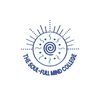
Jane Daisley-Snow
Clicking on the Send Me Details Now button opens an enquiry form where you can message Jane Daisley-Snow directly
Creative therapies such as sand tray, guided drawing, soul collage and clay field allow the gentle and powerful access into the realm of the unconscious.
Jane Daisley-Snow - Art Therapies
Servicing area
FRENCHS FOREST, New South WalesFocus areas
Empty nest
Retirement
Sensorimotor art therapy
Stress Management
Joy
Stroke
Integrative approach with children and adolescents
I use an integrative approach depending on the age and needs of the client. The client –centred approach is used to establish safety and rapport and to provide the opportunity for the child/adolescent to tell their story.
I use sand – tray and symbol work as a bridge between the verbal and expressive therapies as it gives the child or adolescent a safe and symbolic language to express their unconscious feelings, desires, needs and relational patterns. Both inner and outer emotional and relational conflicts can be worked through and resolved and new meanings made.
With younger children I use the creative interventions of enactment, fantasy, storytelling and guided visualization to ignite the child’s imagination and problem-solving abilities. The Art mediums of paint, pastels, crayons, collage and clay are used to awaken their tactile senses and give outward expression to their inner world.
Guided drawing and clay-field therapy the two mediums of Sensorimotor Art Therapy are two powerful therapeutic mediums I implement once trust is established in our relationship and I feel confident in the child’s inner resources and resilience. Through the tactile experience and sensory and motor impulses the child is able to work through their early attachment issues, developmental setbacks and traumatic memories.
Sand Play Therapy and Symbol Work
Estelle Weinrib, Images of the Self, SIGO, 1983
Sand play is a hands-on, expressive form of therapy that has been in use for over fifty years with both children and adults. Sand play allows the deeper unconscious aspects of the psyche to be worked with gently and naturally forming a bridge between the inner and outer world of the person. It is particularly valuable for clients who have experienced trauma and for people who find verbal therapy challenging.
The sand tray is a large box filled with soft sand and the figurines may include animals and insects, buildings, objects from nature, miniature people, dragons and wizards, treasures and crystals, household objects, frightening things, endearing things. The client is asked to go to the shelves and notice which figurines both attract and repel them. These figurines are then arranged in the sand. These figurines can represent parts of ourselves and they become significant symbols for us as our meanings are projected onto them.
The sand awakens the sensory part of our brain and quietens our mind. It calls out to be touched, moved, shaped into valleys, rivers and mountains. We play and add figurines gradually seeing them as projections of our feelings, thoughts, longings and unconscious drives.
Each of us has a fundamental drive towards healing and wholeness and a desire to make sense of our inner and outer worlds. Working at the sand tray facilitates the sifting and integrating process revealing what has been previously buried or suppressed. Sand play and symbol work brings harmony with parts of ourselves and congruence between our inner and outer worlds.
Clay Field Therapy
Clay Field Therapy was founded and developed by Professor Heinz Deuser in 1972. In Europe today Clay Field Therapy is a discipline in its own right and is used in schools, institutions and womens’ shelters. It is a therapeutic and primarily non-verbal medium to support children and adults with attachment issues, developmental setbacks and trauma.
The Clay Field is a large rectangular box of clay. Beside the Clay Field sits a bowl of warm water. The Clay Field symbolically represents the client’s world, the hands are the healing tools. The sense of touch through our hands is called haptic perception. Working at the clay field awakens an intense tactile experience which can evoke early sensory-motor memories such as our birth experience or early holding environment.
The client sits at the Clay Field with eyes closed and is guided by the sensory-motor impulse of their hands. The client’s life story unfolds as the hands intuitively touch, scratch, dig, knead, pinch, smooth and pat the clay. Anything unresolved from the client’s biography will emerge as the shapes, holes and scenes are made in the clay. The hands are then encouraged to resolve the unmet needs or heal the wounds by completing actions in the clay. For example, a client who was born prematurely and was not held by her mother gently packed her hand into the clay adding warm water and smoothing the clay over her hand as a mother would stroke a baby. On a deep cellular level this “sensory motor meeting” completes the action, discharges the negative energy around this emotional wound and changes the neural pattern.
Call me today to book your first session!
Nearby Practitioners
View all
Qt
Focus areas
Hormonal imbalance
Mental health
Anger management

Holistic Psychology
Focus areas
Depression
Family therapy
Pain management

The Soul-Full Mind College
Focus areas
Wellbeing
Mental health
Depression

Annie O'Grady, Certified EFT Practitioner and Master Trainer
Focus areas
Hypertension
Bullying
Business financial stress

Beth Little - Mind and Body
Focus areas
Private health
Muscle pain
Headaches
Click on Send Me Details Now to get started
Send Me Details Now